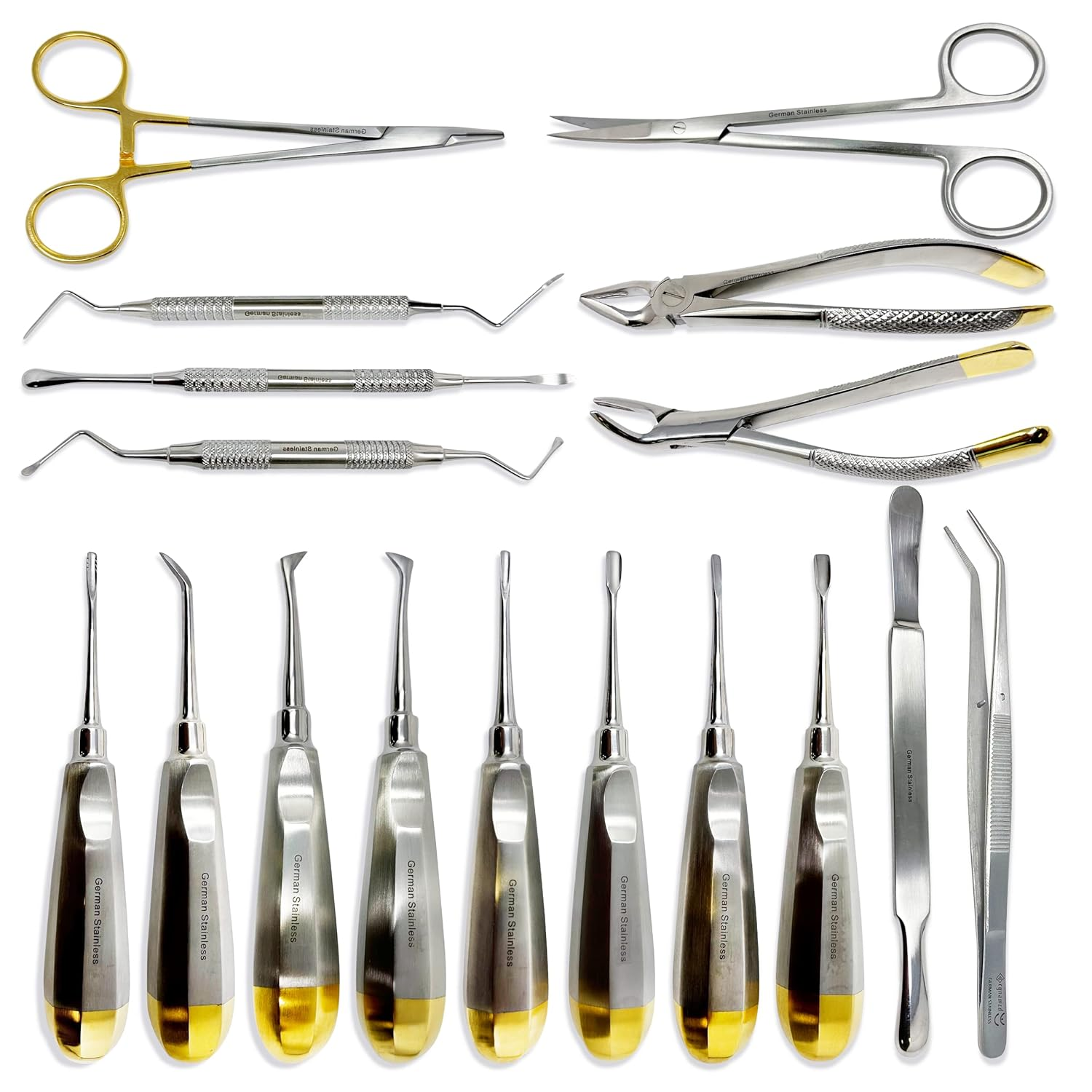
Dental instruments are indispensable tools in any dental practice. They enable professionals to perform various procedures with precision and care, from routine cleanings to complex surgeries. Whether you are a seasoned dentist or a student, understanding these instruments and their functions is crucial.
In this blog, we will cover the essential instruments, their categories, how to maintain them, and the latest advancements in dental technology. Let’s dive into the world of dentistry and see why they are so vital in modern dentistry.
Why Are Dental Instruments Important?
Dental instruments are crucial for maintaining oral hygiene, diagnosing issues, performing treatments, and even educating patients about their oral health. They ensure accuracy, safety, and efficiency during dental procedures.
Imagine performing a dental filling without the proper tools—impossible, right? That’s because each instrument is designed for a specific function, whether it’s examining, cleaning, extracting, or restoring teeth. Using the right tool not only enhances the quality of treatment but also ensures patient comfort.
Categories of Dental Instruments
Dental can be grouped based on their functions. Understanding these categories will help dentists and students choose the right tool for each procedure.
1. Diagnostic Instruments:
These tools are the first point of contact during a dental examination. They help identify dental issues, check oral hygiene, and detect cavities.
- Mouth Mirror:
- Used to view hard-to-see areas in the oral cavity.
- Helps retract soft tissues like the tongue and cheeks.
- Essential for examining tooth surfaces and looking for decay.
- Dental Explorer:
- Detects cavities, plaque, and calculus.
- Helps assess tooth texture and check for enamel flaws.
- Pointed tip allows precise examination of pits and fissures.
- Periodontal Probe:
- Measures the depth of periodontal pockets.
- Used to assess gum health and identify periodontal disease.
- Marked with millimeter measurements for accuracy.
2. Periodontal Instruments:
These instruments are primarily used for treating and maintaining gum health. They help remove plaque and tartar and maintain the periodontal structure.
- Scaler:
- Removes plaque and tartar from above the gum line.
- Designed with pointed tips for efficient scraping.
- Helps in routine cleanings and preventive care.
- Curette:
- Removes deposits from below the gum line.
- Rounded tips minimize tissue trauma.
- Essential for deep cleaning and root planing.
3. Restorative Instruments:
These are used during restorative procedures to repair decayed or damaged teeth. They include tools for applying, shaping, and contouring restorative materials.
- Amalgam Carrier:
- Transfers amalgam to the cavity preparation.
- Double-ended to carry different quantities.
- Reduces contamination by minimizing direct handling.
- Condenser:
- Compacts rethe storative material into the cavity.
- Available in different sizes to match cavity depth.
- Ensures the filling is tightly packed.
- Burnisher:
- Smooths and polishes the surface of a restoration.
- Used to shape composite and amalgam fillings.
- Helps in contouring and finishing the restoration.
- Composite Placement Instruments:
- Used for handling and shaping composite materials.
- Non-stick surfaces prevent material from sticking.
- Provides smooth application and contouring.
4. Surgical Instruments:
These are used during oral surgeries and extractions. They include cutting, retracting, and elevating tools essential for precision and control.
- Elevators:
- Loosen teeth from the periodontal ligament.
- Make extractions easier by reducing resistance.
- Different types, like straight and periosteal, serve various functions.
- Extraction Forceps:
- Grip and remove the teeth from the socket.
- Come in various designs suited for specific teeth.
- Ensure a firm grip without damaging adjacent teeth.
- Scalpel:
- Makes precise incisions during oral surgery.
- Sharp blades minimize tissue trauma.
- Often used in flap surgeries and biopsies.
- Hemostats:
- Clamp blood vessels during surgical procedures.
- Minimize bleeding and aid in tissue retraction.
- The locking mechanism holds tissues securely.
Sterilization of Dental Instruments
Maintaining hygiene is crucial in dental practice. Sterilization eliminates harmful microorganisms, preventing cross-contamination and infections.
Steps for Proper Sterilization:
- Cleaning: Remove debris and organic material.
- Disinfection: Use chemical disinfectants to eliminate pathogens.
- Sterilization: Use autoclaves to apply heat and pressure.
- Storage: Keep instruments in sterile conditions until use.
Common Sterilization Methods:
- Autoclaving: High-pressure steam kills bacteria and spores.
- Chemical Sterilization: Uses solutions like glutaraldehyde.
- Dry Heat: Ideal for instruments that can withstand high temperatures.
- Ultrasonic Cleaning: Removes debris through ultrasonic waves.
Technological Advancements
Modern dental practices are increasingly incorporating digital solutions to enhance patient care and accuracy. Some of the latest innovations include:
- Intraoral Scanners: Create digital impressions without messy molds.
- Electric Handpieces: Offer consistent torque and speed for precise drilling.
- Laser Dental Tools: Allow minimally invasive procedures.
- CAD/CAM Systems: Create crowns and bridges with digital precision.
These advancements improve treatment outcomes and patient comfort, making them essential for contemporary practices.
Maintaining and Storing Dental Instruments
Proper maintenance of dental instruments not only prolongs their life but also ensures they function optimally. Regular inspection, sharpening, and proper storage are fundamental.
- Sharpening: Keep cutting instruments sharp to maintain efficiency.
- Lubrication: Prevents rust and maintains smooth operation.
- Storage: Keep in sterile packs until use to maintain hygiene.
Conclusion:
Dental instruments are the backbone of efficient dental care. Each tool plays a critical role in diagnosing, treating, and maintaining oral health. Investing in high-quality, durable instruments ensures smoother procedures and better patient outcomes. By staying informed about the latest technologies and best maintenance practices, dental professionals can provide top-notch care.
Looking for reliable and high-quality dental instruments? Explore our extensive range designed to meet modern dental needs. Enhance your practice with the right tools today!